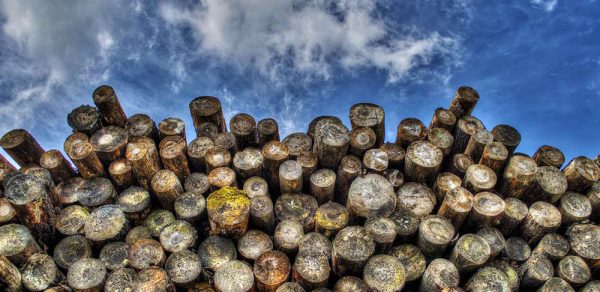What is Seasoned Firewood? A Guide for Beginners

You’ve probably seen the term and wondered, what is “seasoned firewood” and what is it all about? Do our staff nip out to the piles of wood and sprinkle them generously with salt and pepper? Thankfully not.
Seasoning firewood is all about sensible firewood storage. You all know that wet firewood is no good at all if you want a proper roaring fire, and therefore you’ve got to get the moisture content down for a really efficient burn.
What does the firewood seasoning process entail?
It all starts from when the trees you’re going to turn into firewood get cut down. Trees contain sap, which can be a sticky substance. If you’re clever, you cut your trees down when the moisture content is at an absolute minimum, and the best time of year to do this is the winter. Some people leave branches with leaves or needles attached to the trees, allowing them to act as a straw, sucking the moisture out of the main trunk.
The usual water/wood mix in a freshly felled tree is about 50% moisture to 50% wood, and seasoning aims to bring this down to 20-30% moisture. This sort of level is much better for small domestic burning devices like wood burning stoves. Bigger, industrial burners can tolerate more moisture, but let’s focus on household users.
When firewood is felled, it goes through three stages. First of all is “fresh felled”; then there's “air dry”, which is about 25% moisture content, meaning that most of the water has gone from the wood’s cells; then “house dry”, where the wood has been left inside a building, which leaves about 20% moisture content.
After being chopped down, it’s important to leave your felled tree somewhere exposed to a prevailing wind, away from the woods where it was felled, and not sitting directly on the ground. Small celled hardwoods, such as beech, oak and sycamore, need to be left to season for one winter and two summers. Larger celled trees such as poplar, birch and ash only need a spring and summer seasoning, as long as the weather is good. Ideally, any woods which are seasoning should be covered, to stop rain water and snow adding moisture back into the timber.
 Pass the salt and pepper?
Pass the salt and pepper?So now you know, you can put away the salt and pepper shakers, and look forward to some toasty fires thanks to our already seasoned firewood logs.

